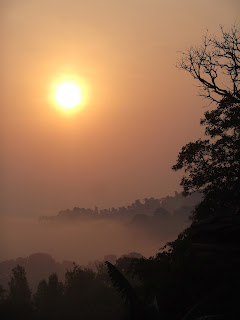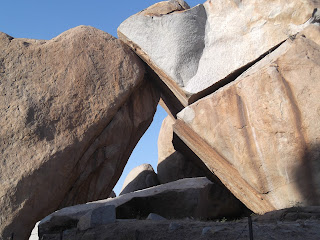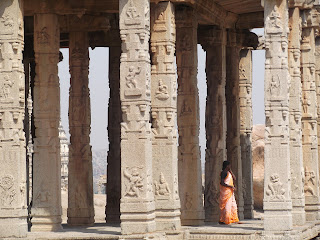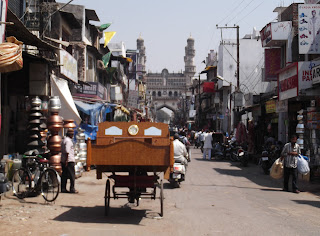As I lifted the
last clean serving pot into place after lunch, one of the sisters came up to me
and said with a warm smile, “we are enjoying your company, you are intelligent,
learn fast and other sister says you make the work very beautiful”. I was so thrilled that I almost skipped out
of the kitchen because I have made no significant effort to do the several
hours a day of chores here, I just find it really easy to muck-in, do them well
and always with a smile.
 Before the
rather more misspent portion of my youth I had a very well spent one; I really enjoyed
Guiding and Venture Scouts and was subsequently a Cub-Scout Leader in my 20s. I have realised this afternoon that my ability to get involved in
an unknown community or kitchen and do a job well is probably thanks to
Scouting. One of Vinobaji’s main facets
of community from a non-violence perspective was that no matter what your
skillset or background, you should do a share of the manual tasks required to
keep you fed, warm and safe …and Scouting (especially camps and
putting on gangshows) provides that balancing gift to youngsters everywhere and they don’t
even notice.
Before the
rather more misspent portion of my youth I had a very well spent one; I really enjoyed
Guiding and Venture Scouts and was subsequently a Cub-Scout Leader in my 20s. I have realised this afternoon that my ability to get involved in
an unknown community or kitchen and do a job well is probably thanks to
Scouting. One of Vinobaji’s main facets
of community from a non-violence perspective was that no matter what your
skillset or background, you should do a share of the manual tasks required to
keep you fed, warm and safe …and Scouting (especially camps and
putting on gangshows) provides that balancing gift to youngsters everywhere and they don’t
even notice.
 Before the
rather more misspent portion of my youth I had a very well spent one; I really enjoyed
Guiding and Venture Scouts and was subsequently a Cub-Scout Leader in my 20s. I have realised this afternoon that my ability to get involved in
an unknown community or kitchen and do a job well is probably thanks to
Scouting. One of Vinobaji’s main facets
of community from a non-violence perspective was that no matter what your
skillset or background, you should do a share of the manual tasks required to
keep you fed, warm and safe …and Scouting (especially camps and
putting on gangshows) provides that balancing gift to youngsters everywhere and they don’t
even notice.
Before the
rather more misspent portion of my youth I had a very well spent one; I really enjoyed
Guiding and Venture Scouts and was subsequently a Cub-Scout Leader in my 20s. I have realised this afternoon that my ability to get involved in
an unknown community or kitchen and do a job well is probably thanks to
Scouting. One of Vinobaji’s main facets
of community from a non-violence perspective was that no matter what your
skillset or background, you should do a share of the manual tasks required to
keep you fed, warm and safe …and Scouting (especially camps and
putting on gangshows) provides that balancing gift to youngsters everywhere and they don’t
even notice.




















































